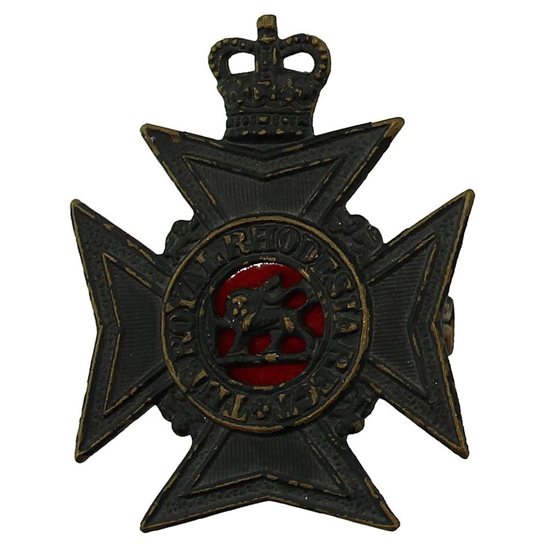Personal Details
Born: 24 May 1884 in Oswestry, Shropshire and baptised at St. Oswald`s Parish Church, Oswestry on 27 July 1884.
Family: He was the fourth of eight children born to Thomas Furmston, a butcher, and his wife Ann Jane, nee Paton. He married Eva Mary Sharpes in Quarter 2 1905 in Oswestry, Shropshire. The couple had five children, Gladys Selina, Edith Mary, Frank L T, Alfred Edward and Herman Sharps (known as Norman).
Residence: At the time of his baptism and on the 1891 Census Edward was living in Leg Street, Oswestry, Shropshire. Some twenty years later and now married he and his family had moved to Cemetery Road, Whitchurch. The address given for him on the 1919 Absent Voters List for Whitchurch was 9 Milebank Road. In 1939 he was living at The Bungalow, Dalefords, Sandiway, Cheshire.
Employment: On the 1911 Census his occupation was a groom; in 1939 he was a groom and gardener.
Died: In 1980 in the Sandiway, aged 96.
Military Details
Regiment: 2nd Rhodesia Regiment
Rank: Sergeant
Service Number: 1043
Date of Enlistment: Not known
Date of Discharge: 30 July 1917
Reason for Discharge: No longer physically fit for war service
Other Information: These are the only military records that can be found for an Edward Thomas Furmston. We believe them to be correct for the Edward Thomas Furmston who was living in Whitchurch in 1919, even though he was serving in the Rhodesia Regiment.
Edward was awarded the Campaign Medals (British War Medal, Victory Medal and 1915 Star).

The 1914 Star (also known as 'Pip') was authorised under Special Army Order no. 350 in November 1917 and by an Admiralty Fleet Order in 1918, for award to officers and men of the British and Indian Expeditionary Forces who served in France or Belgium between 5 August and midnight of 22–23 November 1914. The former date is the day after Britain's declaration of war against the Central Powers, and the closing date marks the end of the First Battle of Ypres.
The 1914–15 Star (also known as 'Pip') was instituted in December 1918 and was awarded to officers and men of British and Imperial forces who served against the Central European Powers in any theatre of the Great War between 5 August 1914 and 31 December 1915. The period of eligibility was prior to the introduction of the Military Service Act 1916, which instituted conscription in Britain.
The British War Medal (also known as 'Squeak') was a silver or bronze medal awarded to officers and men of the British and Imperial Forces who either entered a theatre of war or entered service overseas between 5th August 1914 and 11th November 1918 inclusive. This was later extended to services in Russia, Siberia and some other areas in 1919 and 1920. Approximately 6.5 million British War Medals were issued. Approximately 6.4 million of these were the silver versions of this medal. Around 110,000 of a bronze version were issued mainly to Chinese, Maltese and Indian Labour Corps. The front (obv or obverse) of the medal depicts the head of George V. The recipient's service number, rank, name and unit was impressed on the rim.
The Allied Victory Medal (also known as 'Wilfred') was issued by each of the allies. It was decided that each of the allies should each issue their own bronze victory medal with a similar design, similar equivalent wording and identical ribbon. The British medal was designed by W. McMillan. The front depicts a winged classical figure representing victory. Approximately 5.7 million victory medals were issued. Interestingly, eligibility for this medal was more restrictive and not everyone who received the British War Medal ('Squeak') also received the Victory Medal ('Wilfred'). However, in general, all recipients of 'Wilfred' also received 'Squeak' and all recipients of The 1914 Star or The 1914/1915 Star (also known as 'Pip') also received both 'Squeak' and 'Wilfred'. The recipient's service number, rank, name and unit was impressed on the rim.

